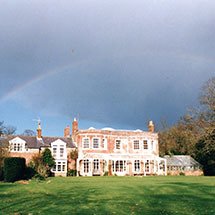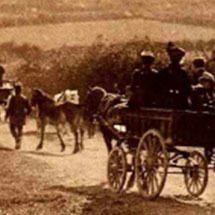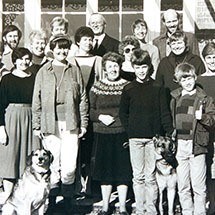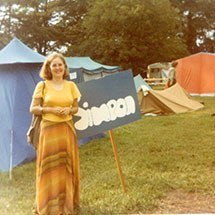How Holton Lee may have looked 500 years ago
Most of the environment at Holton Lee has changed little over the centuries, creating a rare gem – virtually a fossilised medieval landscape.
Early settlers
Early Trade:
 Holton, as this place was originally called, probably started as a Saxon farm (Anglo Saxon: Hollow Tun – ‘the homestead in the hollow’).
Holton, as this place was originally called, probably started as a Saxon farm (Anglo Saxon: Hollow Tun – ‘the homestead in the hollow’).
By 1086 the Domesday Book shows it was owned by a Norman lord, William de Braose, who fought alongside William the Conqueror.
In 1592, documents tell us that the site and its ‘mansion house’ were sold for £320.
Throughout the 1600s, the estate was leased to several farmers who worked together as a community.
The farm’s location alongside Poole Harbour allowed income to be supplemented seasonally from a range of industries including cockle fishing, salt making, growing willow for baskets and thatching, pottery and brick making, sand and gravel for building, coppicing wood for use around the farm, button making, and gorse and turf cutting for animal feed and fuel.
In the 1890s, Sir Elliott Lees, MP for Birkenhead bought Holton and land in Lytchett Minster, making his family home there. Cattle farming continued until the 1960s
The Farmhouse:
About the Oral Histories project
Livability Holton Lee bring you this Oral Histories project, funded by the Heritage Lottery Fund, which culminates in a mini exhibition in June. You can see it at Wareham Town Hall on Saturday the 15th June 9am-1pm and at Livability Holton Lee’s community fair from 11am-4pm on the 14th September.
The project is brought to life by Flourish participants who have been trained to interview and film stories to illustrate the site’s heritage on ipads. The project has spoken to historians, archaeologists, members of the Lees family and the Post Green Community.
Flourish is an Ecotheraphy project based at Livability Holton Lee.
The videos the following pages each reflect an era of Holton Lee’s history. Navigate through the eras to learn more about what many refer to as a ‘magical place’. You can find more by visiting the exhibition.
Why Holton Lee?
Archaeological digs in 2000 and 2011 show that the site has been active farmland since Saxon times and is identified in the 1086 Domesday Book as being assigned to a Norman Lord.
The project seeks to capture the stories of the people that came together and transformed the site from farmland to the therapeutic wellbeing centre it is today.
The exhibition will be on display at Livability Holton Lee’s 350 acre nature reserve in Dorset.
Click here to read an introduction to our heritage





